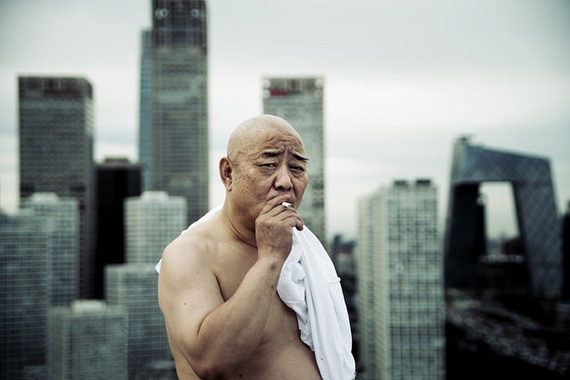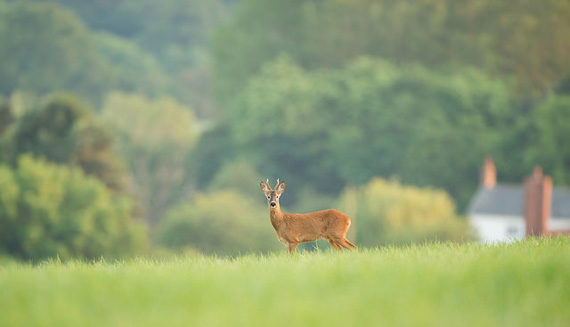I cannot emphasize how important it is to give your subject the place of importance in an image. Its correct placement and the removal of any competition only makes the photo more effective. Besides creating photographs that are truly memorable it gives an overall quality to your photos.

Photo by Jonathan Kos-Read; ISO 100, f/3.2, 1/320-second exposure.
Let’s try something in order to illustrate this point. Go to your old photo albums or shoebox full of pictures, or, if you’re totally digital, go through the folders on your computer. If you have a photo album get yourself a box of those little red dot stickers that come on a roll. If you have a shoebox of pictures get ready to sort them, and if you’re digital get ready to drag and drop into two new folders.
Now here’s what to do. Choose a selection of your images, for example, the first 10 pages of the album, a pile from your shoebox or a folder on your computer. Sort them into two piles, drag them into two folders or place a red dot on the images in the album. In one pile place all the images that have a clear subject. If the subject can be clearly identified as the central focus of the photo put it in one pile, drag it to a folder, or place a red dot on it in the album.
So what’s the purpose of this exercise? What I am trying to illustrate is that you will probably find that the pile, folder, or red dots will be much smaller or fewer than the other pile. Why? Because most people just don’t give the right amount of attention to their subjects. It’s remarkable but it’s true. Without any subject, focal point, or an object of attention the image can only be mediocre. A photo needs a clear subject. Here’s how to improve your photos.

Photo by Don Sutherland.
1. Choose a Clear Subject
If you’re at a family gathering don’t just take general photos of large groups. Zone in on people and create smaller groups of twos and threes. Make sure that when someone views your images the subject clearly says, “I am the subject.” In every play or movie there is always an actor that takes the lead and can clearly be identified. The same goes for your images. If the subject is not clear then the photo is not clear.
2. Be Selective
The problem faced by many amateur photographers is that there are too many subjects and they’re not sure which to include. The answer is simple, be more selective. Narrow down the options and shoot just one. If the others are important then feature them in their own images. It’s better to take three images each with its own subject than to take one in which no one can identify the subject. The focal point is vitally important, as it draws the eye.
3. Exclude Clutter
Competition is the enemy of any subject in an image. A subject should never have to compete for attention in a photo. If it doesn’t clearly say, “I’m the subject,” then it isn’t the subject. Clutter does just that. Anything that clutters an image and has the eye jumping between different parts of that image has to go. Look around the scene when looking through your viewfinder or at the LCD screen and see if anything encroaches on the edges. You can crop the image on your computer, but it’s always better to do it in camera.
4. Get in Closer
Besides helping you to exclude clutter from around the edges of the image it helps you to give the subject a more prominent place in the photo. Bigger is better when creating memories. It’s the subject of the image you want to see in 20 years’ time, and if you need a magnifying glass to see a loved one, then it’s not a real memory. Size will always help a subject take its rightful place in an image. You don’t always have to have every bit of the subject in the image. Sometimes just the face is better than the whole person or part of the car is better than the whole.

Photo by Patrick Emerson.
5. Place Your Subject Carefully
The rule of thirds states that a subject or focal point should be placed slightly off center in an image. Why? It makes a far more pleasing photos and the eye is drawn to those points in an image. Having the subject placed slap bang in the middle of the image is not as effective. If you divide your image into thirds vertically or horizontally like a tic-tac-toe or noughts and crosses grid, where the lines intersect is where you place your subject. Try it and you’ll see just how effective it is.
Happy Shooting!
About the Author:
Wayne Turner has been teaching photography for 25 years and has written three books on photography. He has produced 21 Steps to Perfect Photos; a program of learner-based training using outcomes based education.
Like This Article?
Don't Miss The Next One!
Join over 100,000 photographers of all experience levels who receive our free photography tips and articles to stay current:






I find it interesting that of the three photos you choose for this article – in two of them the subject is smack dab in the middle. I don’t care for the rule of thirds but I will also say this, the most stunning of the three is the one that is not smack dab in the middle.
Thank you so much for sharing your page. This is an excellent tip for us as photographers.
There is one thing the photo must contain, the humankind existing apart from everything else.
That third photo is absolutely gorgeous.
Thanks for the excellent tips, please keep writing!
Great simple point well made.
I can’t count the number of times I’ve thrown away photos due to lacking a subject. I find landscapes are sometimes the most difficult to provide with a subject as they can be large expanses of land. However finding a central point to draw the viewers eye to automatically makes the image stand out further.
Thanks for sharing.